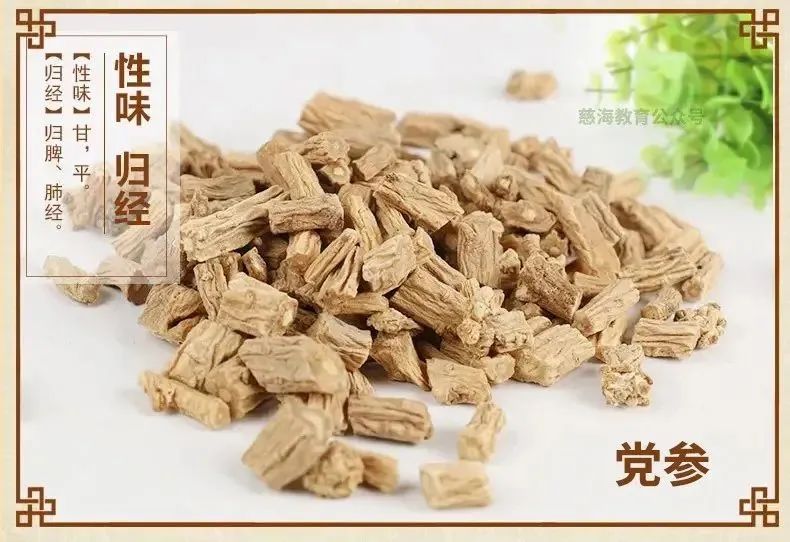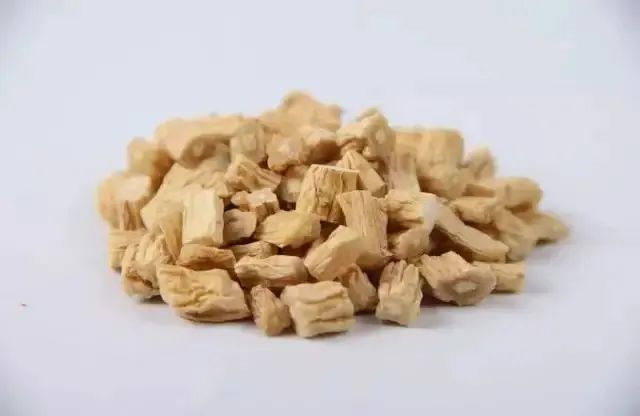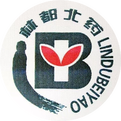
1. Overview
Source: Dang Shen, also known as San Ye Cai, Shang Dang, Dong Dang, Xi Dang, Lu Dang, etc., is a perennial herbaceous vine of the Campanulaceae family. It is a commonly used Chinese medicinal herb, originally from Shang Dang in Shanxi Province, and its root resembles ginseng, hence the name Dang Shen. The root is used medicinally and has functions such as tonifying Qi and nourishing blood, harmonizing the spleen and stomach, generating fluids, and clearing the lungs. There are various types of Dang Shen, such as Xi Dang and Lu Dang, mainly produced in Gansu, Shanxi, Shaanxi, and Sichuan provinces; Dong Dang is mainly produced in the northeastern provinces; Tiao Dang is mainly produced in Sichuan, Hubei, and southern Shaanxi; Bai Dang is mainly produced in Guizhou, Yunnan, and Sichuan provinces.
Taste and Properties: Sweet, neutral. Enters the spleen and lung meridians.
Functions and Indications: Strengthens the spleen and benefits the lungs, nourishes blood and generates fluids.
Characteristics: This herb has similar but weaker effects than ginseng in tonifying the spleen and lungs and generating fluids. It is often used to treat spleen and lung Qi deficiency and injuries to Qi and fluids; it can also nourish blood, treating conditions of dual deficiency of Qi and blood, pale complexion, dizziness, palpitations, and general weakness and fatigue.
Precautions: Should not be used in conjunction with Li Lu.
2. Growth Habits
It has a wide adaptability and has been successfully introduced in various provinces across China. Dang Shen is a deep-rooted plant that prefers a mild climate, particularly cool and humid conditions in summer. It thrives in deep, loose, and fertile soil. It is cold-resistant but sensitive to high temperatures. Waterlogged, saline-alkaline, and heavy clay soils are unsuitable for cultivation, and it should not be planted in the same location repeatedly.
Seedlings prefer moist conditions, especially before germination. Due to the small size of the seeds and thin soil cover, if the soil surface dries out, germination will be hindered. Even if germination occurs, drought can lead to seedling death. During the seedling stage, shade is preferred, as strong sunlight can cause death; therefore, timely shading is necessary. In the mature stage, sunlight is preferred; insufficient sunlight will lead to poor growth and low yield.
3. Cultivation Techniques
1. Site Selection and Preparation: Dang Shen (Lu Dang) prefers to grow in areas rich in humus and deep soil, avoiding strong sunlight. Therefore, when cultivating, choose shaded slopes or semi-shaded areas. The best soil is well-drained, deep, and rich in humus, such as red-black soil. Pure black or red soil can also be used, but the quality is inferior. White soil (especially light-colored white soil) is not suitable for planting Dang Shen. After selecting the land, if it is wasteland, all trees or weeds in the forest should be cut down in winter to enrich the soil, which can remove weed seeds and increase soil fertility. Then, use a hoe to break up the soil and level it. In the second year, when planting, dig 34 cm deep and level the soil; mature land should be deeply plowed once in autumn and again before sowing in the second year.
2. Fertilization: The best fertilizers for Dang Shen are decomposed manure, house soil, mule and horse dung, and pig manure. If on sloped or newly opened land, cow dung should not be used, as it is prone to walnut pests. Fertilizer application: For water-grown seedlings (yang shen), apply 500-750 kg of base fertilizer per 667 square meters, and two additional applications of fertilizer during the hot season. For direct-seeded Dang Shen (broadcast), apply 750-1000 kg of base fertilizer per 667 square meters, and no additional fertilizer is necessary.
3. Sowing: There are two methods and times for sowing Dang Shen.
(1) Direct Sowing (Broadcast): Generally done during the Qingming season or after the frost. When sowing, evenly scatter the seeds in the prepared field and lightly rake the soil; do not sow too deep, as it will affect seedling emergence. Each 667 square meters requires 1-1.5 kg of seeds. Wild Dang Shen can be planted using this method.
(2) Seedling Transplanting (Yang Shen and Pressed Seedlings): The first year is the seedling stage, and the sowing time is the same as for direct sowing. The sowing methods are water-grown seedlings and dry-land seedlings.
① Water-grown Seedlings: After tilling, create beds, apply base fertilizer, finely prepare the soil, level it, and water it. While the soil is moist, evenly scatter the seeds in the beds, using 2-2.5 kg of seeds per 667 square meters, and cover with a thin layer of soil. When the seedlings reach 6-10 cm in height, keep the soil moist; if it rains, to avoid overheating the seedlings, water them every morning to reduce heat. Watering should be done slowly, preferably using a piece of rotten mat at the water entry point to mix the water gently, avoiding damage to the seedlings.
② Dry-land Seedlings: After preparing the land, evenly scatter the seeds in the field, requiring 2.5-3 kg of seeds per 667 square meters, and cover with a thin layer of soil (no covering is needed if sowing after frost). It is best to sow after rain. Before the seedlings emerge, cover the ground with a layer of protective material to prevent sunburn; straw and pine branches are ideal. Once the seedlings reach 5 cm in height, gradually remove the cover, but do not remove it all at once to avoid sunburn. The second year is the transplanting period, referred to by farmers as pressed Dang Shen. Transplanting can occur in spring after the soil thaws or in autumn before the ground freezes. Before transplanting, dig trenches 13-17 cm apart in the selected land, with the depth depending on the length of the seedlings, and apply base fertilizer. Then, place the seedlings in the trench about 7 cm apart, ensuring the tops are level with the soil surface, covering lightly so that the tops are about 2.5 cm above the ground. Each 667 square meters requires 20-25 kg of seedlings.
4. Harvesting Seedlings:
(1) Harvesting Seeds: Seeds from transplanted seedlings mature in the first year during the Cold Dew period, and in the second year during the White Dew period; both can be harvested at once. In the third year, seeds mature in June-July, and should be harvested as they mature, as they do not all mature at once. Directly sown seeds mature after the Summer Heat period; during harvest, the above-ground parts can be cut and placed in a clean area to dry until the seeds fall off. After harvesting, remove impurities and store in porcelain jars or containers to prevent moisture.
(2) Harvesting Seedlings: During the harvest season, use a small hoe (about 3.5 cm wide) to dig up the seedlings, bundling them into small bunches and covering them with moist soil or placing them in a shaded area to prevent drying. If transplanting cannot be completed immediately and the seedlings are drying out, they can be buried in moist soil before transplanting; do not water them, as this can cause damage. If not all seedlings are used in the same year (referring to autumn transplanting), a trench over 100 cm deep can be dug in the ground, placing the seedlings in bunches and covering each layer with moist soil, finally covering with 35 cm of soil to prevent freezing, but not too deep to avoid overheating and rot. They can be planted in the following spring. Generally, water-grown seedlings yield 400-500 kg per 667 square meters, while dry-land seedlings yield 250-350 kg.

4. Cultivation Management
1. Weeding and Fertilization: Weeding is necessary in both water and dry land; weeds should be pulled out by hand as they appear, maintaining a weed-free environment. It is particularly important to advocate “treating weeds early” rather than following a fixed schedule like with crops. Dang Shen can also receive additional fertilization (generally, one application of base fertilizer is sufficient for dry land). For water-grown seedlings, when they reach 6-10 cm in height during the hot season, water should be applied with human manure introduced into the irrigation water.
2. Pest and Disease Control:
(1) Diseases:① Root Rot: Begins to occur in mid to late May, with severe outbreaks during high temperatures and humidity in June-July. It mainly affects plants over two years old, starting with rot at the top and leading to black-brown discoloration of the roots, causing wilting and death. Drainage during the rainy season can reduce damage. During the outbreak, a 50% dinitro solution can be sprayed at a dilution of 200 times.② Rust Disease: Primarily affects the leaves. It is severe in the north during autumn; in the south, it begins in May and is severe in June-July. The affected leaves show slight bulging on the underside, with yellow-brown spots that later rupture, releasing rust-colored powder. Prevention methods include planting on raised beds, ensuring good drainage, avoiding continuous cropping, implementing crop rotation, timely removal and incineration of diseased plants, and disinfecting diseased areas with lime. After harvest, clean the field to eliminate overwintering pathogens, and during soil preparation, apply 1.75 kg of chlorinated nitrobenzene per 667 square meters for soil disinfection, and spray or drench with 1:200 Bordeaux mixture or 65% mancozeb at 800 times dilution every 7-10 days for 3-4 times. Early-stage rust disease can be treated with a 50% dinitro solution at 20 times dilution or 400 times dilution of sodium rusticide.
(2) Pests: Cutworms, grubs, mole crickets, and wireworms often feed on young shoots, seedlings, or roots, causing missing plants or hollow roots. Prevention methods include manually capturing cutworms before sunrise near affected seedlings; during pest outbreaks, use light traps to attract and kill adult insects, and apply 90% dichlorvos at 1000-1500 times dilution or 50% 1605 emulsion at 1000 times dilution, or 75% zinc phosphide emulsion at 700 times dilution around the root zone. The manure used should be well-composted and preferably sterilized through high-temperature stacking. When aphids attack seedlings, a 40% methomyl emulsion at 1500-2000 times dilution can be sprayed every 7-10 days.

5. Harvesting and Processing
Directly sown Dang Shen requires three years for harvesting; seedlings that are transplanted can be harvested in two years. During harvesting, care should be taken to avoid damaging or breaking the roots, which can cause loss of white sap and reduce quality. The harvested Dang Shen should be washed to remove soil, then sorted by length and thickness into large, medium, and small pieces for separate processing and drying. Dry until soft (able to wrap around a finger without breaking) before processing. The Dang Shen should be taken in handfuls and rolled by hand; if the tips are too dry, they can be moistened with warm water to equalize moisture before rolling and drying. Rolling should be done 3-5 times, but avoid excessive rolling, as this can turn them into oily strips, reducing quality. After the first rolling, store them at home and spread them out daily to prevent mold.
The root has dense annular transverse stripes at the base, gradually becoming sparse downward, with longitudinal wrinkles and scattered pores. The lateral roots often have black-brown gelatinous substances at the break points, with a slightly hard or less flexible texture, easily broken, with a slightly flat fracture surface, and may have cracks or radial patterns. The skin is light yellow-white to light brown, and the wood is light yellow. The aroma is mild, and the taste is sweet.
 Source: This article is for non-commercial purposes, and reproduction is solely for the dissemination of basic knowledge about Chinese medicinal materials and positive energy in the industry. If there are any objections, it will be deleted. The views expressed in this article are solely those of the author and do not represent the position of this platform. Please indicate the source when reprinting.
Source: This article is for non-commercial purposes, and reproduction is solely for the dissemination of basic knowledge about Chinese medicinal materials and positive energy in the industry. If there are any objections, it will be deleted. The views expressed in this article are solely those of the author and do not represent the position of this platform. Please indicate the source when reprinting.

· END ·

